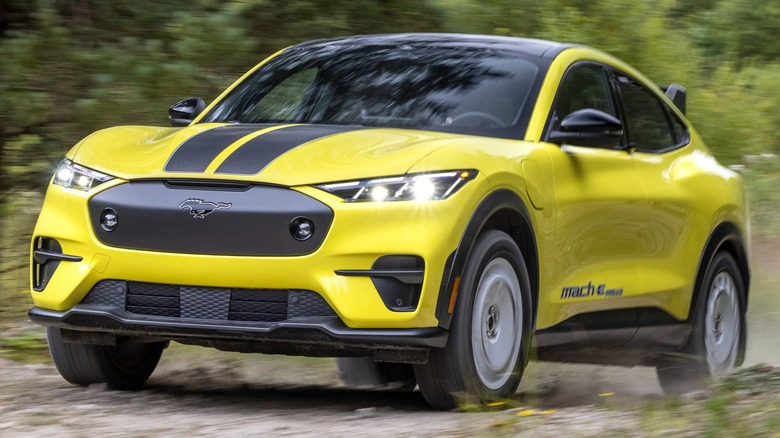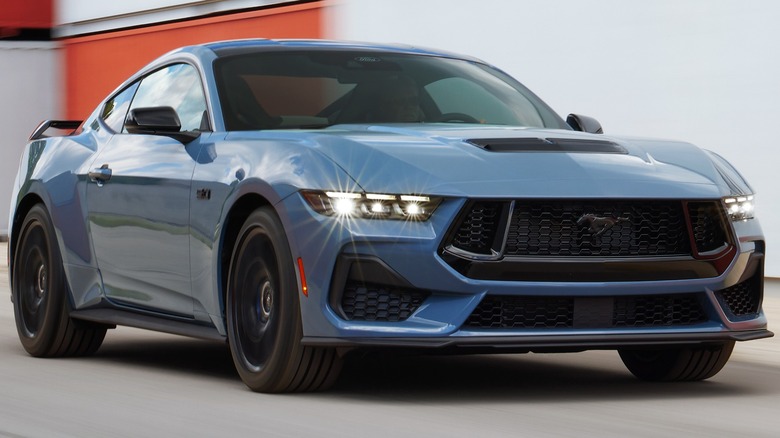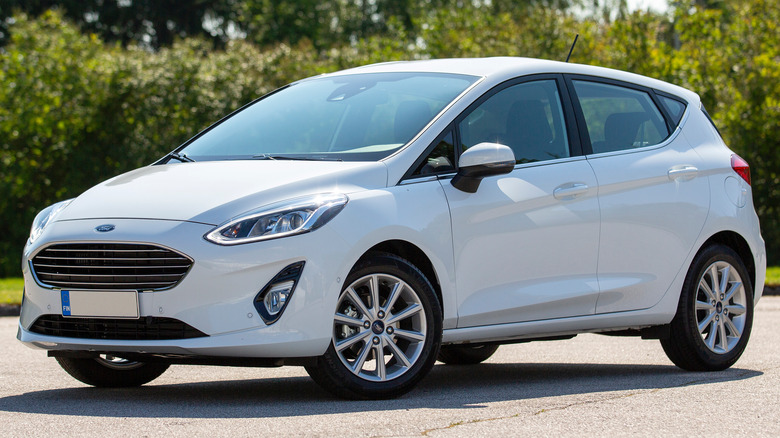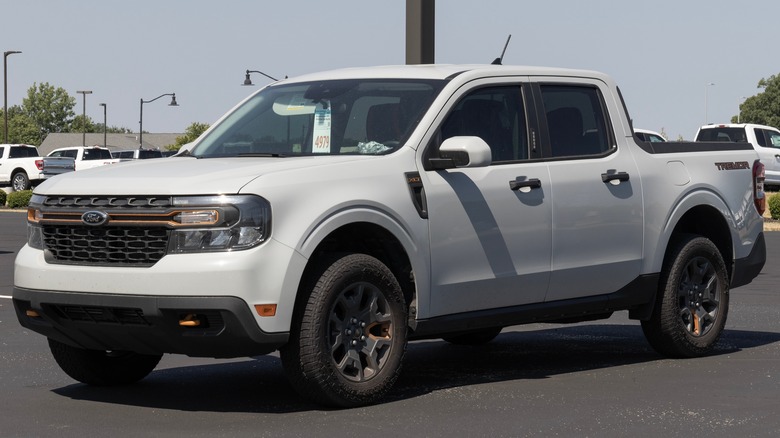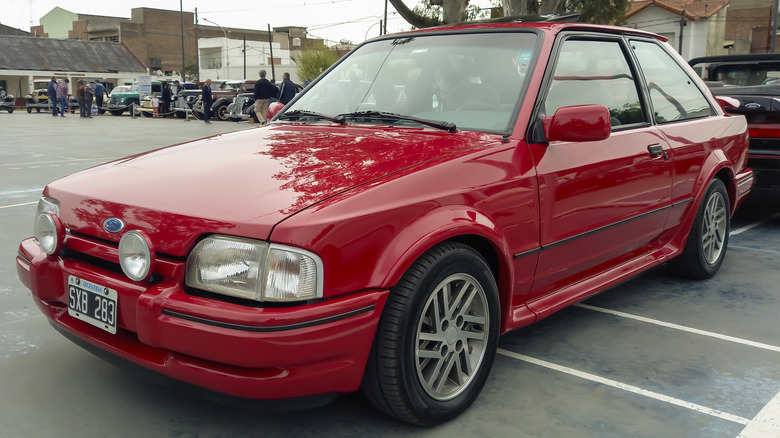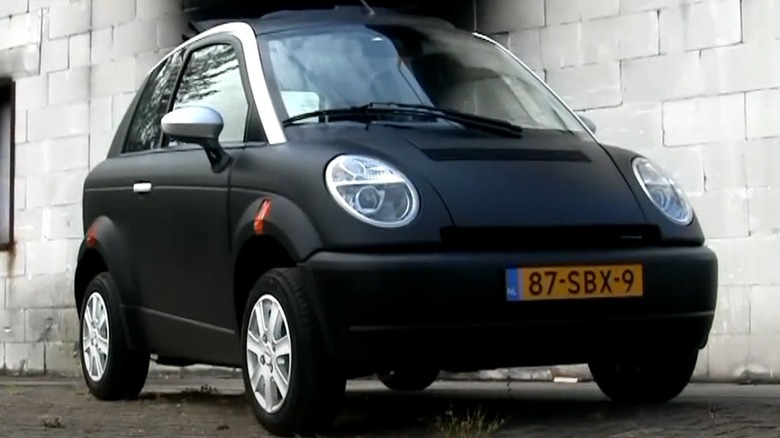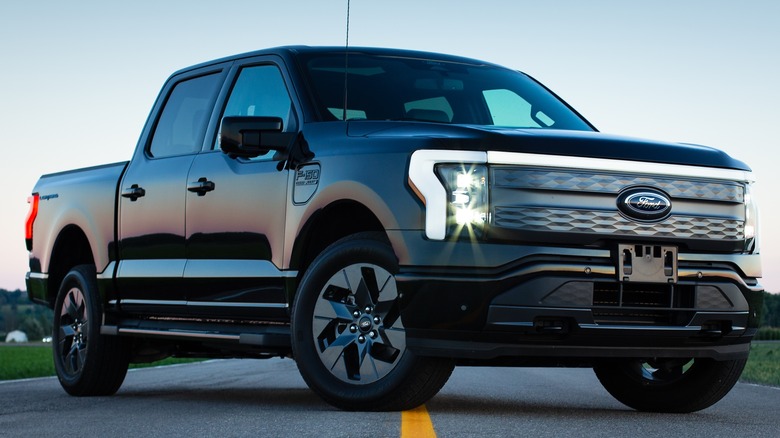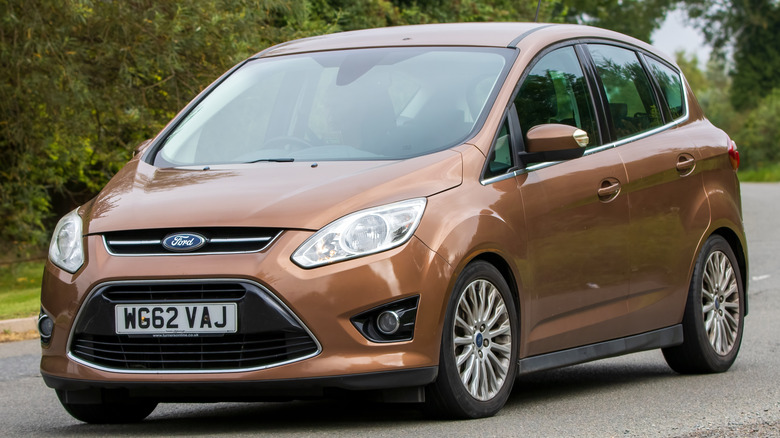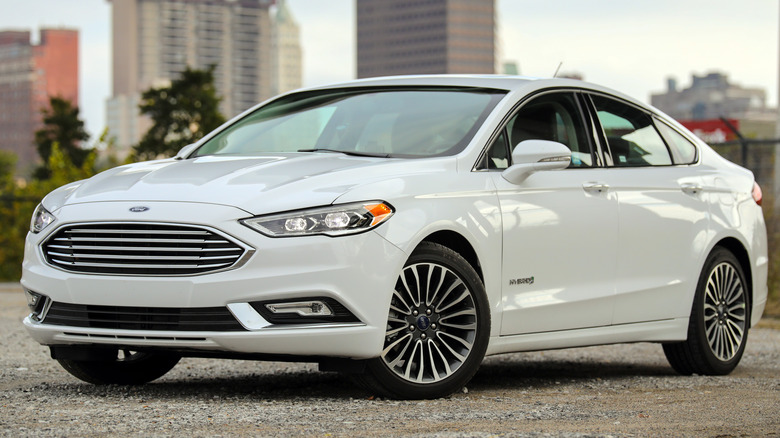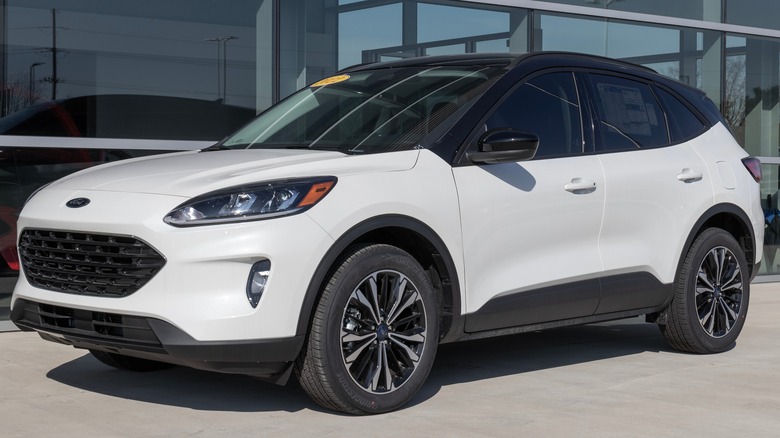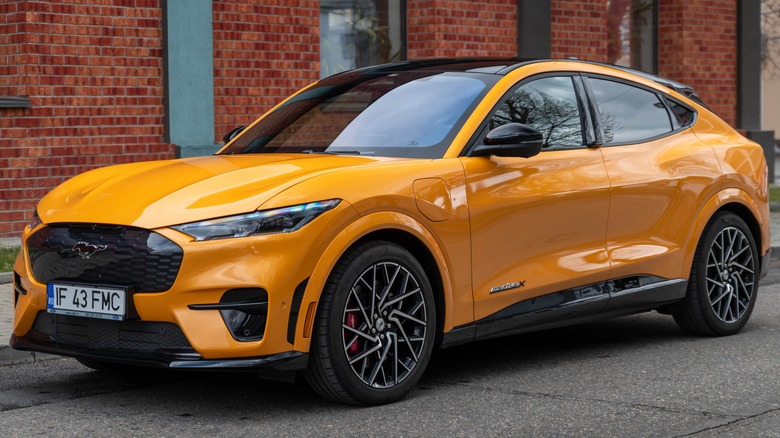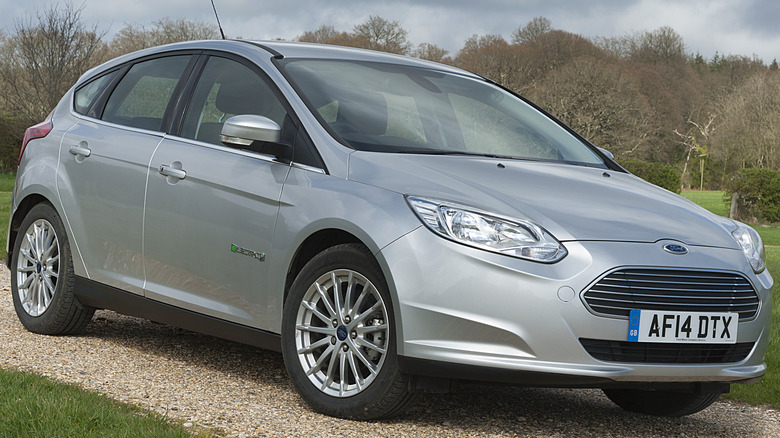These Are The Most Fuel Efficient Fords Ever Made
Since its inception in 1903, Ford has been at the forefront of automotive innovation, offering various vehicles to cater to different needs. Over the years, Ford has embraced efficiency, offering models with advancements like Flex Fuel (FFVs) to allow vehicles to use different fuel types.
Its evolution continued with the introduction of hybrids and plug-in hybrids, which still provide the best of both worlds by combining the internal combustion engine with electric motors for more power and significant efficiency gains. Nowadays, part of the Ford lineup features EVs, boasting zero emissions and better fuel efficiency than most older models. By embracing these advancements, Ford demonstrates its commitment to providing buyers with various choices that prioritize performance and environmental responsibility.
Below, we examine the most fuel-efficient Fords ever made and highlight the technologies contributing to their impressive ratings. We scrutinize them by their miles per gallon (MPGe for PHEVs and EVs) to showcase efficiency in converting fuel or electric energy into travel distance.
2024 Ford Mustang – 26 MPG
Since Ford introduced the Mustang concept in 1963, it has been one of the leading muscle cars in the industry. There have been seven generations of the Mustang, with the most recent model starting production in 2024. This new version of the Mustang introduced a new design, a revised powertrain, and an all-new Mustang Dark Horse trim with track-ready enhancements.
It has a starting price of $30,920, nine trims, and two powertrains: a 2.3-liter EcoBoost four-cylinder and a 5.0-liter V8. The EcoBoost engine produces 315 hp and 350 lb-ft of torque and only pairs this engine with a 10-speed automatic transmission, powering the rear wheels. On the other hand, the V8 engine powers two Mustang trims: GT and Dark Horse. In the Ford Mustang GT trim, the engine produces 486 hp and 418 lb-ft of torque, while the Dark Horse boasts 500 hp and 418 lb-ft. Ford pairs the V8 with a six-speed manual as standard; however, there's also an optional 10-speed automatic.
While the base model can't match the V8's performance, it's the most efficient, boasting an EPA fuel economy rating of 22 mpg city, 33 mpg highway, and 26 mpg combined. The V8, despite being the quickest, is the least efficient powertrain, with the 10-speed automatic GT trim managing a fuel economy rating of 16 mpg city, 24 mpg highway, and 19 mpg combined.
2017 Ford Fiesta – 35 MPG
Despite Ford ending Fiesta production in 2019 for the North American market, it was a comfortable vehicle with reasonably potent powertrains and modern technology. For the 2017 model year, Ford equipped the Fiesta with two powertrains: a 1.6-liter four-cylinder and a 1.0-liter EcoBoost three-cylinder. Both the sedan and hatchback had S, SE, and Titanium configurations. However, the ST trim, Ford's high-performance variant, was only available as a hatchback.
As standard, the base model had the 1.6-liter four-cylinder engine, producing 120 hp and 112 lb-ft of torque. Ford paired this engine with a five-speed manual transmission, powering the front wheels. This model had a fuel economy rating of 27 mpg city, 35 mpg highway, and 30 mpg combined. Ford also offered an optional six-speed automatic transmission. Models with the optional automatic transmission had a better EPA fuel economy rating of 27 mpg city, 37 mpg highway, and 31 mpg combined.
The optional 1.0-liter EcoBoost three-cylinder engine had more power, boasting 123 hp and 125 lb-ft of torque. Ford paired this engine with a five-speed manual transmission, helping it scamper from 0 to 60 mph in 8.9 seconds. Thanks to its smaller displacement and turbocharging technology, this EcoBoost was the most efficient powertrain, helping the Fiesta achieve an EPA rating of 31 mpg city, 41 mpg highway, and 35 mpg combined.
1989 Ford Festiva – 35 MPG
The Ford Festiva was a subcompact vehicle produced from 1986 to 2002. Ford produced the car for three generations using Mazda's 121 design. However, unlike the Mazda, the Festiva had different design cues, including the floating Ford emblem and grille.
The 1989 Ford Festiva was part of the first generation, boasting two engine options: a 1.1-liter and a 1.3-liter. However, for the North American market, the Festiva was only available with the 1.3-liter four-cylinder engine. The engine produced 63 hp and 73 lb-ft of torque, sending it to the front wheels through a five-speed manual, four-speed manual, or three-speed automatic transmission.
The Festiva's fuel economy rating of 33 mpg city, 39 mpg highway, and 35 mpg combined was only achievable with the five-speed manual models. Opting for the four-speed manual lowered the rating to 32 mpg city, 36 mpg highway, and 34 mpg combined. Models with the three-speed automatic transmission had the lowest fuel economy rating of 26 mpg city, 29 mpg highway, and 27 mpg combined.
2024 Ford Maverick – 37 MPG
The Ford Maverick is a compact pickup truck that competes with rivals like Hyundai's Santa Cruz. Ford unveiled it in 2021, giving it a classic nameplate previously used on various vehicles. At the time, Ford estimated an EPA fuel economy rating of 40 mpg combined, thanks to the available hybrid powertrain. In addition to its efficiency, Ford promised smarter technology and a FLEXBED system, which made the Maverick more appealing than its rivals.
For the 2024 model year, the Maverick outdoes the Santa Cruz, with a lower starting of $23,920. The Maverick has three trims: XL, XLT, and Lariat. The base variant uses a 2.0-liter EcoBoost four-cylinder engine with 250 hp and 277 lb-ft of torque. Ford mates this engine to an eight-speed automatic transmission, powering the front wheels as standard. However, there's also optional all-wheel drive with the EcoBoost-powered Mavericks.
In addition, Ford also offers an optional 2.5-liter hybrid powertrain with 191 combined hp. This powertrain pairs with a continuously variable automatic transmission, only powering the front wheels. While it's less potent than the EcoBoost powertrain, the hybrid boasts the best EPA fuel economy rating of 42 mpg city, 33 mpg highway, and 37 mpg combined. It also offers a total range of 511 miles despite having a smaller 13.8-gallon fuel tank.
1985 Ford Escort – 40 MPG
The Ford Escort was an incredible rally machine in the late '60s and early '70s. Ford produced the Escort for three generations, providing buyers with a selection of subcompact and compact family vehicles. Considered Ford's first "world car," the Escort succeeded the Ford Pinto and was introduced in the North American market in 1981. The first-generation model of the Escort was available with multiple configurations: a four-door wagon, a two-door hatchback, and a four-door hatchback.
These models had a selection of powertrains, including a 1.6-liter four-cylinder, a 2.0-liter four-cylinder diesel, and a 1.9-liter four-cylinder. The engine lineup helped the Escort compete with rivals like the Nissan NX, Mitsubishi Mirage, and Suzuki Swift. It also helped make the Escort more efficient than its rivals, especially the Mazda-produced diesel engine, which had an EPA rating of 36 mpg city, 46 mpg highway, and 40 mpg combined. Despite its impressive economy, Ford fitted the Mazda-produced diesel engine up to 1897, after which all models got the newer non-carbureted 1.9-liter four-cylinder engine.
2001 Ford Ranger – 58 MPGe
Ford first introduced the Ranger, a compact pickup truck, in 1983. The first-generation Ranger was available with two cabs: regular and extended. Ford also offered two drive options and a selection of engines, including a potent 2.8-liter V6. The 2001 model was part of the third generation, and it had new safety features and interior and exterior design.
Ford offered four powertrains: a 2.3-liter four-cylinder, a 3.0-liter V6, a 4.0-liter v6, and an electric powertrain. Like most modern powertrains, the Ranger EV had the best economy rating of 62 MPGe city, 54 MPGe highway, and 58 MPGe combined. However, it only had a total range of 50 miles. Fortunately, Ford's EV technology has evolved, with modern EV trucks like the F-150 Lightning offering an impressive range of 320 miles and an economy rating of 70 MPGe combined.
Nowadays, the 2024 Ford Ranger pickup is a mid-size truck, competing with models like the Toyota Tacoma, GMC Canyon, and Chevrolet Colorado. While Ford doesn't offer an electric version like its predecessor, the modern Ranger has more power from its turbocharged engines, modern technology, advanced driver assistance features, and bolder styling.
2001 Ford Th!nk – 65 MPGe
For decades, EVs were considered the future of mobility due to their zero tailpipe emissions. While it took a few years before the world adopted EVs, Ford aimed to change the notion at the beginning of the century. Besides introducing the Ford Ranger EV, Ford also announced a new brand, Th!nk Group. The brand was to provide various environmentally friendly products, including vehicles. Th!nk Mobility aimed to offer battery electric vehicles. Among these vehicles included Th!nk Neighbor, a golf cart-like vehicle, and Th!nk City, a compact car serving a purpose similar to Daimler's Smart Fortwo.
The Th!nk City was a battery electric car with an electric motor powering the front axle. Like the Smart Fortwo, the Th!nk City was ideal for both city and highway driving. Thanks to its electric powertrain, the Th!nk City had an EPA economy rating of 74 MPGe city, 58 MPGe highway, and 65 MPGe combined. However, it only had a total range of 29 miles. While Ford no longer produces the Th!nk, its electric lineup keeps expanding, featuring models like the Mustang Mach-E, F-150 Lightning, and E-Transit.
2024 Ford F-150 Lightning – 70 MPGe
Ford introduced the F-150 Lightning, its first ever all-electric F-Series pickup truck, in 2022, promising buyers performance and value even in its base configuration. At the time, Ford targeted an estimated range of 230 miles with the base configuration and 300 miles with the extended-range version. The modern F-150 Lightning surpasses its predecessor's goals, offering not only better range but also new equipment.
The modern Ford F-150 Lightning has a starting price of $49,995 and four trims: Pro, XLT, Lariat, and Platinum. The lineup gets dual electric motors powering the front and rear axles as standard. These motors help the base F-150 Lightning produce 462 hp and 775 lb-ft of torque. However, opting for the extended-range version increases the performance to 580 hp.
Compared to the ICE-powered F-150, the Lightning lineup boasts more power, enabling the base model to scamper from 0 to 60 mph in 4.1 seconds. It is also more efficient, boasting an EPA rating of 78 MPGe city, 63 MPGe highway, and 70 MPGe combined. Despite its increased performance and efficiency, the F-150 Lightning has a maximum range of 320 miles, compared to 756 miles of its ICE-powered sibling.
2017 Ford C-Max Energi – 95 MPGe
Ford introduced the C-Max lineup in 2003, featuring cars that boasted Ford's fuel-efficient EcoBoost and diesel powertrains. However, in 2013, Ford introduced the C-Max Hybrid lineup, promising better fuel economy and moving the brand closer to an efficient future. For the 2017 model year, the C-Max was available in Hybrid and Plug-In Hybrid configurations.
The hybrid produced 188 combined horsepower, while the Energi (plug-in hybrid) produced 195 combined hp. However, the plug-in hybrid promised better fuel economy than the C-Max Hybrid. It had an EPA rating of 39 mpg combined with the 141 hp 2.0-liter four-cylinder engine, and the plug-in hybrid powertrain enabled it to offer up to 95 MPGe combined. It also had a total range of 570 miles, making it more efficient than most Ford EVs of the earlier years.
Unfortunately, Ford discontinued the C-Max lineup in mid-2018 in the U.S. due to changes in the automotive market. The C-Max lagged behind rivals like the Toyota Prius, which promised 56 mpg combined and a total range of 633 miles. In addition, there was an increased demand for SUVs and crossovers, further forcing Ford's hand. Nowadays, Ford still offers a great selection of hybrids and plug-in hybrids, including the Maverick, F-150, and Escape.
2020 Ford Fusion Energi – 103 MPGe
The Ford Fusion was a mid-size family sedan introduced in 2005 for the 2006 model year. At the time, the Fusion was Ford's way of getting into the family sedan market, offering buyers a quality sedan that would compete with imports. Ford used a lengthened Mazda 6 platform, adding the Fusion's interior space. Unfortunately, the Fusion was around for only two generations before its discontinuation in 2020 due to Ford's focus on SUVs and crossovers.
For its last hurrah, Ford offered five powertrains, including a hybrid and a plug-in hybrid. The plug-in hybrid, also called the Fusion Energi, used a 2.0-liter four-cylinder engine and an electric motor to produce a combined 188 hp. Like all 2020 Fusion models, it had a front wheel drive system. However, unlike its siblings, it was the most efficient, boasting an EPA rating of 42 mpg with the gas engine and 103 MPGe with the plug-in hybrid powertrain. The Fusion Energi has a total range of 610 miles, thanks to the additional 26 miles from its battery pack.
2022 Ford Escape – 105 MPGe
The Ford Escape is a compact SUV that competes with models like the Mazda CX-5, Honda CR-V, and Volkswagen Tiguan. Ford introduced the Escape in 2000, sharing some components with Mazda's Tribute. Since then, there have been four generations of the Escape, all offering newer powertrains, designs, and safety features. The 2022 Ford Escape was part of the fourth generation, and it didn't have any significant changes, except for the new blue colors.
The lineup had four trims: S, SE, SEL, and Titanium. The base powertrain was a 1.5-liter EcoBoost engine with 181 hp and 190 lb-ft of torque. It paired with an eight-speed automatic, powering either the front or all four wheels. In the base configuration, the Ford Escape had a good fuel economy rating of 28 mpg city, 34 mpg highway, and 30 mpg combined. Opting for all-wheel drive lowered the economy to 26 mpg city, 31 mpg highway, and 28 mpg combined.
Additional Ford Escape powertrains included a 250 hp 2.0-liter EcoBoost, a 165 hp 2.5-liter hybrid, and a 165 hp 2.5-liter plug-in hybrid. The plug-in hybrid was the most efficient of the four powertrains, boasting an EPA rating of 40 mpg with a regular gasoline powertrain and 105 MPGe with the hybrid powertrain. Adding the plug-in hybrid system helped the Ford Escape PHEV offer a total range of 520 miles.
2024 Ford Mustang Mach-E – 106 MPGe
For decades, the Mustang nameplate was only reserved for Ford's iconic muscle car. However, Ford changed this in 2021 when it introduced the Mustang Mach-E, an SUV with an electric powertrain. Unlike the ICE-powered Mustang, the Mach-E had more space, a quiet ride, and all-wheel drive. For the 2024 model year, the Mustang Mach-E has a $39,995 starting price and four trims: Select, Premium, GT, and Mustang Mach-E Rally.
As standard, the Mustang Mach-E has a single motor powertrain, propelling the rear axle. This powertrain produces 264 hp and 387 lb-ft of torque. In this configuration, the Mustang Mach-E has an impressive economy rating of 106 MPGe city, 98 MPGe highway, and 102 MPGe combined. However, equipping it with Ford's extended-range battery increases its economy to 111 MPGe city, 100 MPGe highway, and 106 MPGe combined.
Ford also offers an optional dual motor powertrain which powers the front and rear axles. In the Mustang Mach-E Select, the powertrain produces 325 hp and 500 lb-ft of torque when paired with the base battery. Opting for the extended battery pack increases the horsepower to 365 and helps the Mach-E dash from 0 to 60 mph in 4.1 seconds. The GT and Rally trims provide more oomph from their dual motor powertrains. The GT trim boasts 480 hp and 600 lb-ft of torque. However, opting for the Performance Upgrade increases its torque output to 700 lb-ft, similar to the Rally trim.
2018 Ford Focus Electric – 107 MPGe
Ford introduced the Focus in 1998 as a compact car ideal for families. At the time, the Focus had a cutting-edge design and competed with models from Volkswagen, Honda, and Mazda. Ford produced the Focus for four generations, and since the first generation, it succeeded in rallying and touring championships. Unfortunately, Ford ended production of the Focus in the U.S. in 2018 after announcing that it wouldn't make all passenger cars except its iconic muscle car, the Mustang.
Like its predecessors, the 2018 Ford Focus was a compact car, available as a sedan or hatchback. It competed with models like the Honda Civic, Kia Forte, Chevrolet Cruze, and Toyota Corolla. The Focus had a wide selection of powertrains, with the base model using a 1.0-liter EcoBoost three-cylinder that produced 123 hp and 125 lb-ft of torque. Ford paired this engine with a six-speed manual or automatic transmission, powering the front wheels.
Most of the remaining Ford Focus trims used a 2.0-liter four-cylinder engine, with the ST and RS models adding a turbocharger for more power. While these models had more power, they couldn't match the performance of the electric powertrain in the Focus Electric model. This variant had a single electric motor, producing 143 hp and 184 lb-ft of torque. It was slightly more powerful than the base Focus model and had the best fuel economy rating of 118 MPGe city, 96 MPGe highway, and 107 MPGe combined.
